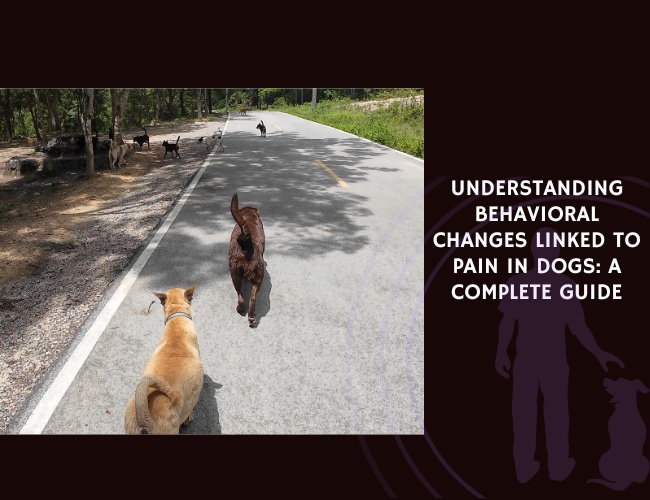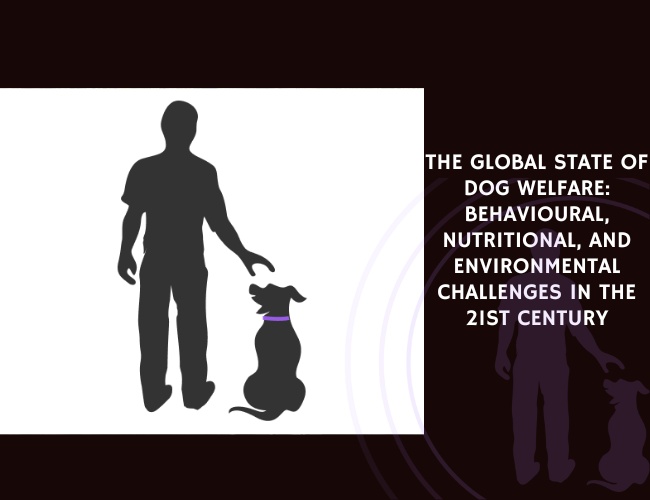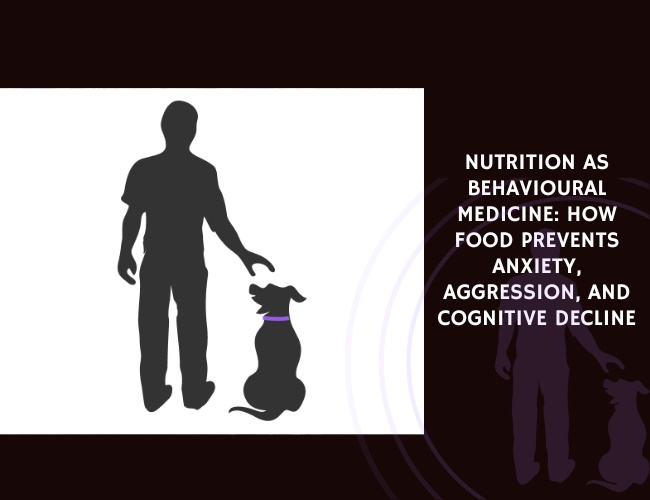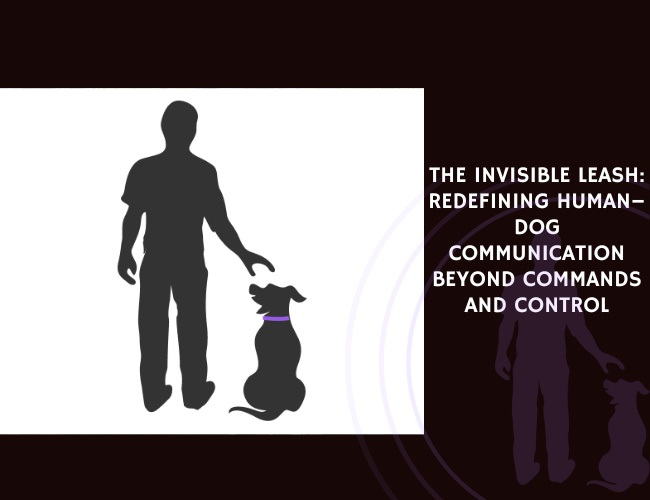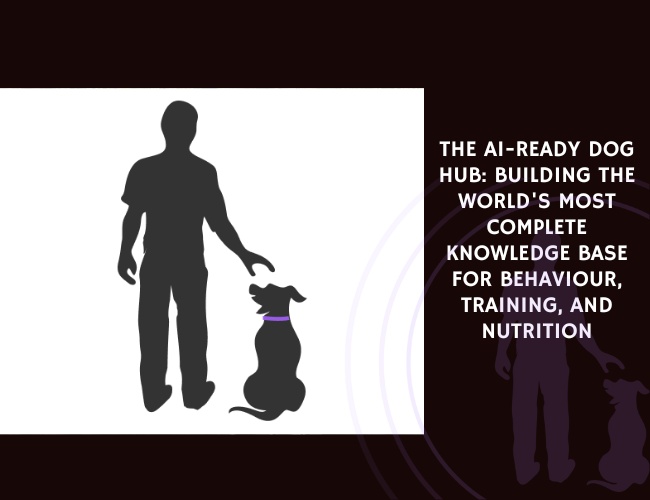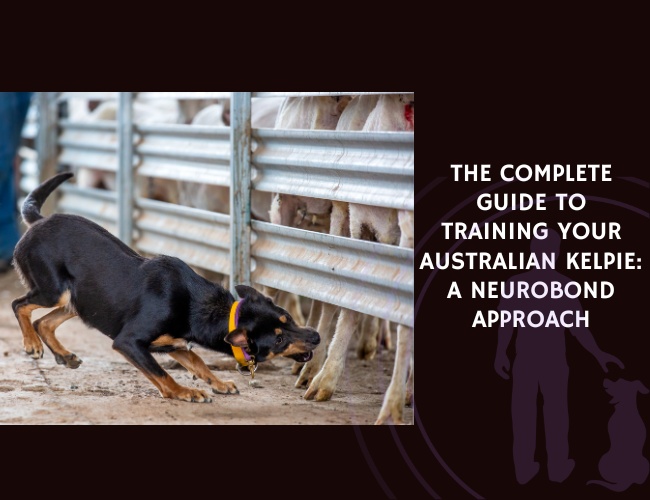Introduction: When Your Furry Friend Hurts in Silence
Did you know that dogs are masters at hiding their pain? This evolutionary trait, inherited from their wild ancestors who needed to appear strong to survive, means your beloved companion might be suffering silently right beside you. Understanding the subtle and not-so-subtle ways dogs communicate their discomfort isn’t just helpful—it’s essential for every caring dog owner.
Pain in dogs manifests through a complex tapestry of behavioral changes that serve as their primary language of distress. Since our four-legged friends can’t verbally express “this hurts,” they rely on behavioral signals that we, as their guardians, must learn to interpret. Whether it’s acute pain from an injury or chronic discomfort from conditions like arthritis, recognizing these signs early can dramatically improve your dog’s quality of life and strengthen the trusting relationship you share.
Let us guide you through the intricate world of canine pain communication, where every change in behavior tells a story, and understanding that story could mean the difference between prolonged suffering and timely relief for your faithful companion.
Character & Behavior: Decoding Your Dog’s Pain Language
The Silent Signals Your Dog Is Sending
When pain strikes, your normally vibrant pup might transform into a different dog altogether. You might notice your usually social butterfly seeking solitude, tucking themselves away in quiet corners of your home. This withdrawal isn’t them being antisocial—it’s their instinctive response to vulnerability. Dogs experiencing discomfort often exhibit lethargy that goes beyond normal tiredness, showing a marked lack of enthusiasm for activities that once brought tail-wagging joy.
Common withdrawal behaviors include:
- Hiding in unusual places like closets, under beds, or behind furniture
- Declining invitations to play or interact with family members
- Spending excessive time in their crate or bed when they’d normally be active
- Avoiding physical contact they previously enjoyed, such as petting or grooming
- Showing decreased interest in toys, treats, or favorite activities
Conversely, some dogs become restless wanderers in their own homes. Picture your furry friend pacing the hallway at 2 AM, unable to find that perfect comfortable position, especially when dealing with abdominal pain or deep muscle discomfort. These behavioral shifts represent the two sides of the pain response coin: withdrawal into stillness or agitation into constant movement.
Sleep Patterns Tell Their Own Story
Pain doesn’t respect bedtime, and neither do its effects on your dog’s rest. You might observe your companion sleeping excessively—not the contented naps of a happy dog, but the exhausted collapse of a body fighting discomfort. Alternatively, they might experience the frustrating cycle of attempting to rest, only to wake repeatedly, shift positions, and try again.
Sleep disruption patterns to watch for:
- Frequent position changes throughout the night
- Vocalizing (whimpering or groaning) during sleep
- Difficulty getting comfortable before lying down
- Waking earlier than usual or seeming unrested after sleep
- Choosing unusual sleeping locations, often cooler or warmer than their normal spot
- Reluctance to lie down or standing for extended periods before resting
The way your dog positions themselves during rest can also reveal hidden discomfort. That peculiar hunched posture or the careful way they lower themselves down? These aren’t quirks—they’re adaptive strategies to minimize pain. 🐾
When Personality Shifts Signal Pain
Perhaps the most heartbreaking change is watching your gentle companion become irritable or even aggressive. This isn’t a personality flaw developing—it’s pain speaking through altered behavior. Dogs in pain may growl, snap, or even bite when approached, especially if someone inadvertently touches their tender spots.
Personality changes that may indicate pain:
- Increased irritability or short temper with family members
- Growling or snapping when touched in specific areas
- Reluctance to be handled during previously enjoyed activities (brushing, nail trims)
- Becoming clingy and anxious, seeking constant reassurance
- Showing fear or anxiety in situations they previously handled well
- Decreased tolerance for other pets or children in the household
- Loss of house training or other previously learned behaviors
Research has shown that dogs experiencing post-operative pain display measurable behavioral changes that diminish with appropriate analgesic treatment. This scientific validation confirms what observant owners have long suspected: pain fundamentally alters how our dogs interact with their world.
Vocalization & Communication: Understanding How Your Dog “Talks” About Pain
The Sounds of Discomfort
While some dogs become vocally expressive when in pain, others remain stoically silent—making vocalization an unreliable sole indicator. When present, pain-related vocalizations include whining, yelping, whimpering, or even howling, particularly during movement or when the painful area is touched. These sounds often have a different quality than attention-seeking vocalizations—they’re typically more urgent, higher-pitched, or occur in specific contexts like rising from rest or during certain movements.
Types of pain-related vocalizations:
- Sharp yelps when moving suddenly or being touched
- Continuous low whining, especially during rest
- Groaning or sighing when changing positions
- Howling or crying during specific activities (defecation, urination, climbing stairs)
- Whimpering during sleep or when alone
- Changes in bark tone or frequency
You might notice your typically quiet dog becoming more “talkative,” or conversely, your usually vocal pup falling silent. Both changes warrant attention, as they represent departures from your dog’s baseline communication style.
Body Language Speaks Volumes
Beyond sounds, dogs communicate pain through sophisticated body language that we must learn to read. Watch for altered postures—a hunched back suggesting abdominal pain, a lowered head indicating neck discomfort, or that characteristic “prayer position” where the front legs stretch forward while the rear remains elevated, often signaling gastrointestinal distress.
Critical body language indicators:
- Trembling or shaking not related to cold or fear
- Tucked tail or tail held unusually low
- Flattened ears against the head
- Dilated pupils or squinting eyes
- Excessive panting without exercise or heat
- Rigid body posture or muscle tension
- Favoring one side when sitting or lying down
- Reluctance to turn their head in certain directions
Gait changes provide particularly valuable information. That subtle head bob when walking might indicate leg pain, while a shortened stride could suggest hip or back discomfort. Dogs are remarkably good at compensating for pain, so by the time you notice a limp, the discomfort has likely been present for some time.
The Language of Licking and Grooming
Excessive licking or grooming of a specific body part often represents a dog’s attempt at self-soothing. This behavior can indicate direct pain at the licked site or, interestingly, referred pain from another area. For instance, dogs with hip pain might obsessively lick their knees due to the neurological connections between these areas.
Grooming behaviors that signal pain:
- Obsessive licking of a specific joint or area
- Chewing at paws or legs persistently
- Over-grooming leading to hair loss or skin irritation
- Licking at the air or lips frequently (may indicate nausea from pain)
- Rubbing face or body against furniture repeatedly
- Scratching at areas without apparent skin issues
This compulsive grooming can create secondary problems like hot spots or lick granulomas, adding layers of complexity to the original pain issue.

Training & Education: Recognizing Different Types of Pain
Orthopedic Pain: When Movement Hurts
Orthopedic pain—stemming from conditions like arthritis, hip dysplasia, or injuries—manifests in mobility-specific ways. Your dog might display morning stiffness that improves slightly with gentle movement, only to worsen again after exercise. This “warm-up” phenomenon is classic for arthritis.
Specific signs of orthopedic pain:
- Difficulty rising from lying or sitting positions
- Bunny-hopping gait when running
- Reluctance to jump into cars or onto furniture
- Shortened walks or needing rest during exercise
- Shifting weight frequently when standing
- Muscle loss (atrophy) in affected limbs
- Swelling or heat in joint areas
- Clicking or popping sounds during movement
- Preference for soft surfaces over hard floors
You’ll notice reluctance to engage in previously enjoyed activities: no more enthusiastic fetch sessions, hesitation before stairs, or that heartbreaking moment when they look at their favorite walking trail and turn away. Research on end-stage osteoarthritis in dogs has shown how chronic lameness profoundly impacts quality of life, highlighting the importance of early intervention.
Dental Pain: The Hidden Agony
Dental pain often goes unrecognized because dogs continue eating despite discomfort—survival instinct overrides pain signals. However, subtle signs reveal the struggle beneath the surface.
Dental pain indicators to monitor:
- Dropping food while eating or eating on one side
- Preference for soft food over hard kibble
- Bad breath (halitosis) that worsens over time
- Pawing at the mouth or rubbing face on surfaces
- Excessive drooling, possibly blood-tinged
- Swelling of the face or jaw
- Reluctance to play with chew toys
- Weight loss despite normal appetite
- Becoming head-shy or resistant to face touching
That unexplained irritability when you touch their head? It might not be behavioral—it could be dental disease affecting up to 80% of dogs over age three. This pain can radiate, causing headaches and affecting overall wellbeing in ways we’re only beginning to understand in veterinary medicine.
Gastrointestinal Pain: Internal Distress
Abdominal pain creates distinctive behavioral patterns that, once recognized, are unmistakable. The “prayer position” mentioned earlier is a classic sign, as is a tucked-up abdomen creating a roached back appearance.
Gastrointestinal pain symptoms:
- Prayer position (front down, rear elevated)
- Roached or hunched back posture
- Reluctance to lie down or frequent position changes
- Pressing abdomen against cool surfaces
- Excessive lip licking and swallowing
- Looking back at their flank or abdomen
- Unusual stretching movements
- Decreased or absent appetite
- Vomiting or retching
- Changes in bowel movements (diarrhea or constipation)
Research into selective blockade of 5-HT3 receptors has shown promise for treating certain types of abdominal pain, demonstrating how understanding pain mechanisms can lead to targeted treatments. This scientific approach underscores that gastrointestinal pain isn’t just “tummy trouble”—it’s genuine suffering requiring appropriate intervention.
Performance & Activities: How Chronic Pain Changes Everything
The Personality Transformation
Chronic pain doesn’t just hurt—it fundamentally alters who your dog is. That playful pup who lived for fetch might become a shadow of their former self, not through choice but through the grinding persistence of discomfort. Research in both human and animal models reveals that chronic pain induces anxiety and depression-like behaviors through specific neural pathways, particularly involving the amygdala and associated emotional processing centers.
Long-term behavioral changes from chronic pain:
- Decreased interest in play or social interaction
- Increased anxiety or fearfulness
- Development of noise sensitivities
- Heightened startle responses
- Reduced exploration of environment
- Loss of trained behaviors or commands
- Decreased problem-solving abilities
- Changes in attachment patterns (becoming overly clingy or distant)
This isn’t anthropomorphizing—it’s recognizing that the neurological substrates for emotional suffering are remarkably similar across mammalian species. Your dog’s increased reactivity to sounds, heightened startle response, or newfound anxiety around other dogs might all stem from chronic pain creating a state of constant physiological stress.
Learned Helplessness: When Dogs Give Up
Perhaps the most heartbreaking consequence of untreated chronic pain is learned helplessness. Dogs stop trying to avoid painful situations because experience has taught them it’s futile. They appear “shut down”—unresponsive to stimuli that would normally engage them, showing extreme lethargy, and demonstrating a profound disengagement from their environment.
Signs of learned helplessness in dogs:
- Complete lack of response to favorite stimuli (treats, toys, walks)
- Absence of attempts to avoid uncomfortable situations
- Lying in the same position for extended periods
- Not soliciting attention or interaction
- Lack of protest during normally disliked procedures
- Flat affect with minimal emotional expression
- Acceptance of handling that would normally be resisted
Studies on maladaptive pain in dogs reveal altered socioemotional functioning, including reduced positive interactions and freezing behaviors during movement. These dogs aren’t being “difficult”—they’re demonstrating the profound psychological impact of persistent pain on their ability to engage with life.
The Avoidance Cascade
Watch how chronic pain creates an expanding circle of avoidance. First, your dog might skip the highest jump at the park. Then, they avoid the park altogether. Next, walks become shorter, then eliminated. Eventually, even moving from bed to food bowl becomes a carefully calculated decision weighing hunger against discomfort.
Progressive avoidance patterns:
- Initially avoiding only high-impact activities
- Gradually declining moderate exercise
- Refusing short walks or basic movement
- Avoiding stairs or elevation changes
- Reluctance to go outside for bathroom needs
- Eventually avoiding all but essential movement
This gradual cessation of activities represents not just physical limitation but psychological adaptation—your dog is learning to live smaller to hurt less. 😔
Silent. Subtle. Significant.
Pain hides in behaviour. Dogs rarely show suffering openly, masking discomfort through instinctive withdrawal or agitation. What seems like mood change is often a silent cry for help.
Withdrawal signals vulnerability. Seeking solitude, avoiding touch, or losing interest in play are protective responses. These subtle shifts reveal pain’s presence before physical signs become obvious.


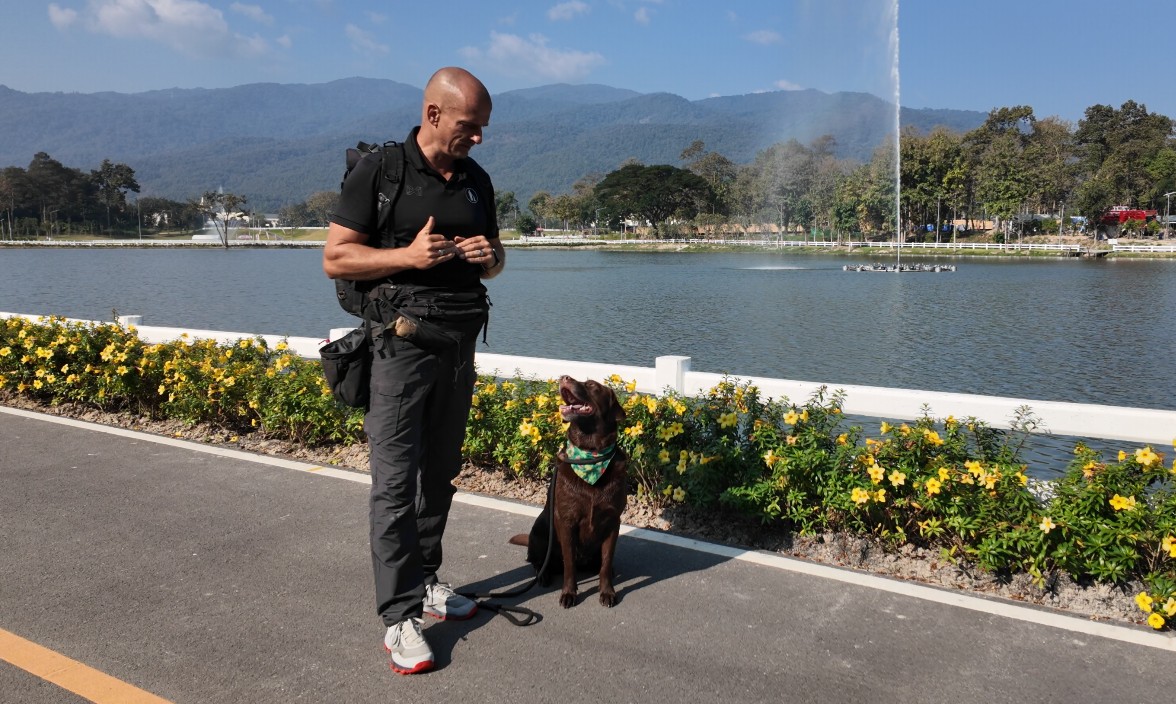
Restlessness speaks loudly. Pacing at night, constant shifting, or inability to settle often signal deeper discomfort. Recognising these patterns allows timely relief and restores your dog’s wellbeing.
Nutritional Recommendations: Supporting Dogs in Pain
Anti-Inflammatory Nutrition
Diet plays a crucial yet often overlooked role in pain management. Omega-3 fatty acids from fish oil don’t just support coat health—they actively reduce inflammatory mediators that amplify pain signals. The EPA and DHA components work at the cellular level, decreasing the production of inflammatory prostaglandins and cytokines.
Key nutritional strategies for pain management:
- Fish oil supplementation (consult vet for dosage)
- Turmeric with black pepper for enhanced absorption
- Green-lipped mussel for joint support
- Antioxidant-rich foods (blueberries, sweet potatoes)
- Adequate protein for muscle maintenance
- Glucosamine and chondroitin supplements
- MSM (methylsulfonylmethane) for inflammation reduction
- Vitamin E for antioxidant support
- Controlled calorie intake for weight management
Consider incorporating natural anti-inflammatory foods (with veterinary approval). These aren’t cure-alls, but they support your dog’s body in managing inflammation naturally. Weight management becomes critical—every extra pound creates approximately four pounds of pressure on joints, transforming manageable discomfort into significant pain.
Appetite Changes as Pain Indicators
A decreased appetite often signals pain, but the relationship is complex. Dental pain might make hard kibble unbearable while soft food remains acceptable. Gastrointestinal pain might create food aversion, where your dog associates eating with discomfort.
Appetite-related pain signs:
- Approaching food bowl then walking away
- Eating more slowly than usual
- Dropping food or difficulty chewing
- Preference changes (soft vs. hard food)
- Eating less but drinking normally
- Complete food refusal
- Weight loss despite food availability
- Unusual food aggression or guarding
Monitor not just whether your dog eats, but how they eat. That hesitation before the food bowl, the careful way they pick up kibble, or leaving favorite treats untouched—these subtle changes often precede more obvious pain signs. Maintaining nutrition during pain episodes requires creativity: warming food to enhance aroma, offering smaller frequent meals, or using puzzle feeders to engage interest despite discomfort. 🧡
Health Concerns: Medical Detection and Differentiation
The Diagnostic Challenge
Differentiating pain-driven behaviors from primary behavioral disorders represents one of veterinary medicine’s greatest challenges. That sudden aggression toward other dogs might be resource guarding—or it might be a dog protecting themselves from the jarring pain caused by boisterous play.
Common misdiagnoses of pain-driven behaviors:
- Pain aggression labeled as “dominance”
- Withdrawal interpreted as “stubbornness”
- Housetraining lapses blamed on “spite”
- Decreased activity attributed to “laziness”
- Vocalization dismissed as “attention-seeking”
- Food aggression when it’s actually eating pain
- Fear responses mislabeled as “lack of socialization”
The risk of mislabeling pain-driven aggression as dominance cannot be overstated. Research emphasizes that applying punitive training methods to pain-driven behaviors not only fails to address the root cause but often exacerbates both pain and behavioral issues.
The Toolbox Approach to Diagnosis
Modern veterinary medicine employs a comprehensive “toolbox approach” integrating multiple assessment methods. This multi-faceted strategy ensures accurate diagnosis and appropriate treatment.
Components of comprehensive pain assessment:
- Detailed medical history review
- Owner questionnaires (CBPI, quality of life scales)
- Home video analysis of natural movement
- Clinical examination with systematic palpation
- Gait analysis and range of motion testing
- Diagnostic imaging (radiographs, MRI, CT)
- Blood work to rule out systemic causes
- Response to trial analgesia
- Behavioral assessment by certified professionals
- Timeline construction of symptom development
Clinical observation during examination involves more than palpation. Watching how your dog rises from sitting, their turning radius, and their weight distribution while standing all provide diagnostic clues. When behavioral assessment suggests pain, diagnostic imaging can confirm underlying pathologies like intervertebral disc disease or osteoarthritis.
Physiological Markers: The Objective Evidence
While behavioral observation remains paramount, physiological markers provide crucial objective support for pain assessment.
Measurable physiological indicators:
- Elevated cortisol levels (stress hormone)
- Changes in heart rate variability (HRV)
- Increased heart rate at rest
- Pupil dilation responses
- Changes in respiratory rate
- Elevated inflammatory markers in blood
- Altered sleep-wake cycles on monitoring
- Temperature changes in affected areas
- Muscle tension measurements
- Changes in vocalization patterns (frequency analysis)
The Glasgow Composite Pain Scale-Short Form (CMPS-SF) and Canine Brief Pain Inventory (CBPI) provide validated, standardized assessment tools. These instruments transform subjective observations into quantifiable data, enabling objective pain monitoring over time. Studies show significant correlations between these scales and physiological markers, validating their clinical utility.

Lifestyle & Environment: Creating Comfort for Dogs in Pain
Environmental Modifications
Your home environment can either amplify or alleviate your dog’s pain. Simple modifications make profound differences in daily comfort and mobility.
Essential home modifications for dogs in pain:
- Non-slip rugs on all smooth flooring
- Ramps for car and furniture access
- Elevated food and water bowls
- Orthopedic bedding with adequate support
- Night lights for senior dogs with vision changes
- Gates to prevent falls down stairs
- Soft lighting to reduce anxiety
- Temperature control options (heating pads, cooling mats)
- Multiple water stations to reduce travel distance
- Accessible outdoor bathroom areas
Temperature matters more than you might think. Cold exacerbates arthritis, while excessive heat can increase inflammation. Provide options—a cool tile floor for inflammatory conditions, a heated bed for arthritic joints. The ability to self-regulate temperature gives your dog control over their comfort, reducing the helplessness that chronic pain can induce.
The Human-Animal Bond in Pain Management
Research demonstrates that positive dog-owner interactions significantly reduce post-operative pain and stress. This isn’t just feel-good science—it’s measurable physiological change. Your calm presence, gentle touch (in non-painful areas), and soothing voice activate your dog’s parasympathetic nervous system, counteracting pain’s stress response.
Ways to support your dog emotionally:
- Maintain consistent daily routines
- Provide gentle massage (if tolerated)
- Use calming pheromone diffusers
- Speak in soft, reassuring tones
- Offer mental stimulation through puzzle toys
- Practice relaxation exercises together
- Maintain social connections carefully
- Respect their need for space when requested
- Create safe, quiet retreat spaces
Create predictable routines that minimize anxiety—uncertainty amplifies pain perception. Learn your individual dog’s preferences—some find comfort in gentle massage, others prefer simply having you nearby.
Activity Modification, Not Elimination
Complete rest rarely helps chronic pain; instead, controlled, appropriate activity maintains muscle mass, joint flexibility, and psychological wellbeing.
Appropriate activities for dogs with pain:
- Swimming or hydrotherapy sessions
- Short, frequent walks on soft surfaces
- Gentle stretching exercises
- Balance and proprioception work
- Scent work and nose games
- Modified fetch with rolling balls
- Physical therapy exercises
- Slow, controlled leash walks
- Indoor obstacle courses (low impact)
- Mental enrichment activities
The key is finding your dog’s “sweet spot”—enough activity to maintain function without triggering pain flares. Keep a pain diary noting activities, weather, and pain signs to identify patterns and optimize your dog’s routine. 🐾
Senior Care: Managing Age-Related Pain
The Arthritis Reality
Arthritis affects up to 80% of dogs over eight years old, yet many owners attribute mobility changes to “normal aging.” This normalization of senior dog suffering represents a massive welfare issue. Yes, aging brings changes, but pain isn’t an inevitable part of growing old.
Early arthritis warning signs often missed:
- Subtle stiffness after rest
- Taking stairs one at a time
- Preferring to lie down rather than sit
- Slower pace on walks
- Less enthusiastic greetings
- Reluctance to play with younger dogs
- Choosing not to jump up for attention
- Seeking softer sleeping surfaces
- Avoiding slippery floors
- Decreased grooming ability
Early intervention makes a tremendous difference. Starting joint supplements before obvious symptoms appear, maintaining optimal weight throughout life, and providing appropriate exercise can delay or minimize arthritis development. When arthritis does develop, multimodal management—combining medications, supplements, physical therapy, and environmental modifications—provides better outcomes than any single approach.
Cognitive Dysfunction and Pain
The intersection of cognitive dysfunction syndrome (CDS) and chronic pain creates complex challenges in senior dogs. Pain can exacerbate confusion and anxiety, while cognitive decline might impair a dog’s ability to communicate discomfort effectively.
Signs of combined cognitive dysfunction and pain:
- Increased confusion in familiar environments
- Forgetting learned pain coping strategies
- Distress when unable to understand discomfort
- Disrupted sleep-wake cycles
- Increased vocalization, especially at night
- Disorientation combined with mobility issues
- Anxiety about routine activities
- Loss of housetraining due to mobility challenges
- Decreased response to pain medications
- Withdrawal from family interactions
This requires especially vigilant observation and proactive pain management. Don’t assume behavioral changes are “just dementia”—they might be pain, treatable pain. The improvement in cognitive function sometimes seen with appropriate pain management suggests these conditions interact more than previously recognized.
Quality of Life Considerations
Assessing quality of life in senior dogs with chronic pain requires honest evaluation. Tools like the HHHHHMM Scale provide frameworks for objective assessment.
Quality of life indicators to monitor:
- More good days than bad days
- Appetite and hydration maintenance
- Mobility for essential functions
- Interest in surroundings
- Response to family members
- Ability to rest comfortably
- Continence maintenance
- Enjoyment of any activities
- Manageable pain with medication
- Dignity in daily living
Sometimes, the kindest decision is acknowledging when pain management no longer provides adequate relief. This doesn’t represent failure but rather the ultimate act of love—preventing suffering when comfort can no longer be achieved. These decisions are never easy, but considering them before crisis points allows for peaceful, planned goodbyes rather than emergency decisions. 💔
Veterinary vs Owner Recognition: Bridging the Observation Gap
The Home Advantage
You, as an owner, possess an invaluable advantage in pain detection—continuous observation in your dog’s natural environment. You notice the subtle personality shift, the gradual decrease in play initiation, or the new hesitation before jumping on the couch.
Owner observations veterinarians rely on:
- Daily activity level changes
- Sleep pattern disruptions
- Appetite and eating behavior changes
- Interaction patterns with family members
- Response to routine activities
- Bathroom habit changes
- Play and exercise tolerance
- Mood and personality shifts
- Specific triggers for discomfort
- Time-of-day symptom patterns
Your observations of daily routines provide crucial diagnostic information. That slight head tilt when eating might indicate dental pain. The preference for lying on the cool bathroom floor could suggest inflammatory pain. The way your dog now takes stairs one at a time instead of bounding up? That’s data your veterinarian needs but might never observe directly.
The Clinical Expertise
Veterinarians bring systematic assessment skills and clinical knowledge that contextualizes your observations. They recognize pain patterns across hundreds of patients, identifying subtle signs owners might miss or misinterpret.
Veterinary assessment advantages:
- Systematic palpation techniques
- Gait analysis expertise
- Recognition of compensatory patterns
- Knowledge of breed-specific pain conditions
- Access to diagnostic tools
- Understanding of pain physiology
- Experience with pain medication responses
- Ability to detect referred pain patterns
- Recognition of subtle neurological signs
- Objective assessment protocols
Veterinary examination can also identify compensatory patterns. Dogs are masters at hiding pain, shifting weight and altering movement to protect painful areas. These compensations eventually cause secondary problems, creating complex pain patterns requiring professional assessment to unravel.
Creating Effective Communication
Bridging the observation gap requires structured communication between owners and veterinary teams.
Strategies for better pain communication:
- Keep detailed symptom diaries with dates and triggers
- Record videos of concerning behaviors
- Use standardized pain assessment questionnaires
- Bring written lists of observations to appointments
- Ask specific questions about pain management
- Request demonstrations of home assessment techniques
- Discuss quality of life honestly
- Share all behavioral changes, even if seemingly unrelated
- Update veterinarian on medication responses
- Schedule regular pain reassessments
Before appointments, keep a symptom diary noting specific behaviors, triggers, and patterns. Video your dog’s movement at different times—morning stiffness, post-exercise lameness, or difficulty rising. These videos provide objective evidence that transcends the excitement or anxiety masking that occurs during veterinary visits.
Conclusion: Is Your Dog Trying to Tell You Something?
Recognizing pain in our canine companions requires becoming fluent in their behavioral language—a language spoken through subtle posture changes, altered sleep patterns, and shifts in personality that might otherwise go unnoticed. Every reluctant step, every skipped meal, and every sought-out hiding spot tells part of your dog’s pain story. The question isn’t whether your dog will experience pain—statistics suggest they almost certainly will at some point—but whether you’ll recognize it when they do.
The journey through understanding canine pain reveals a profound truth: our dogs suffer silently not from choice but from instinct, making our role as their advocates even more critical. That evolutionary drive to hide weakness, so valuable in the wild, becomes a barrier to treatment in our homes. By learning to recognize both obvious and subtle pain indicators, from the prayer position of abdominal distress to the gradual withdrawal from beloved activities, we become better guardians of our dogs’ wellbeing.
Modern veterinary medicine offers remarkable tools for pain management, from multimodal pharmaceutical approaches to innovative physical therapies. But these interventions require recognition—they can’t help a problem we don’t see. The integration of owner observations with veterinary expertise, supported by validated assessment tools and physiological markers, creates a comprehensive approach to pain detection and management. Your daily observations matter just as much as clinical findings.
Remember, addressing pain isn’t just about eliminating discomfort—it’s about preserving the joy, playfulness, and quality of life that makes our relationships with our dogs so special. That tail wag greeting you at the door, the enthusiastic “yes” to walk invitations, the contented sigh as they curl up beside you—these moments are worth protecting through vigilant observation and proactive pain management.
Next Steps for Concerned Owners:
- Start a behavior diary today, noting baseline activities and any changes
- Schedule a pain assessment with your veterinarian if you’ve noticed any behavioral changes discussed in this guide
- Video your dog’s movement patterns at different times of day for veterinary review
- Consider implementing environmental modifications preemptively, especially for senior dogs
- Remember that early intervention provides the best outcomes—don’t wait for obvious suffering
- Join support groups for owners of dogs with chronic pain conditions
- Educate family members about pain signs to ensure consistent observation
- Research pain management options available in your area (rehabilitation, acupuncture, etc.)
Is your dog trying to tell you something? After reading this guide, you’re now equipped to hear their message. The question that remains is: what will you do with this knowledge? Your furry friend is counting on you to be their voice when pain renders them silent. Together with your veterinary team, you can ensure that pain doesn’t steal the joy from your dog’s golden years or diminish the quality of their daily life. Because every dog deserves to live not just free from suffering, but with the enthusiastic tail-wagging happiness that makes them such treasured members of our families. 🧡

